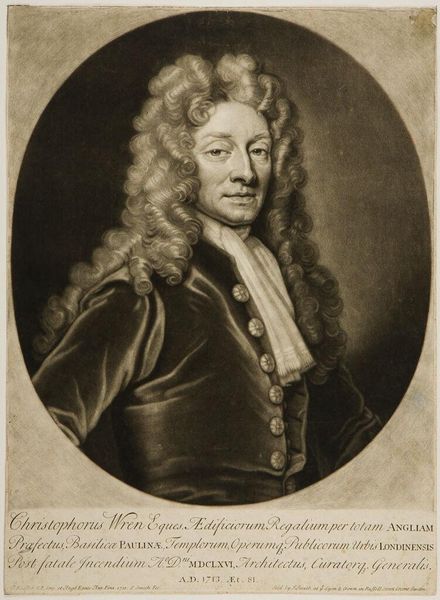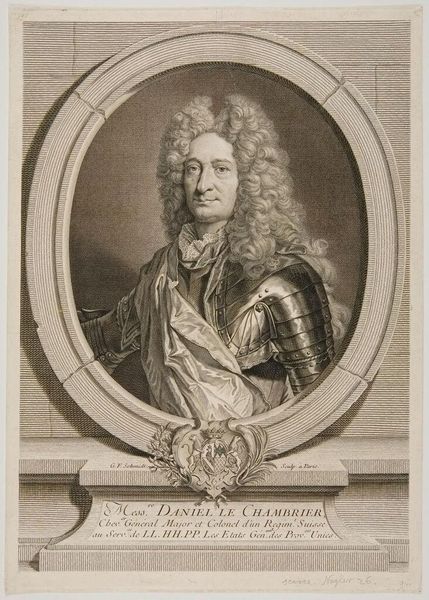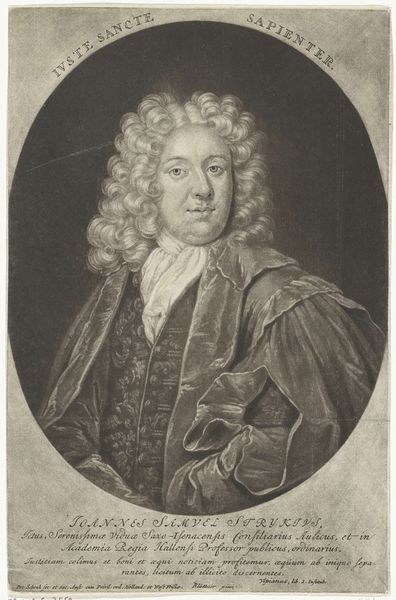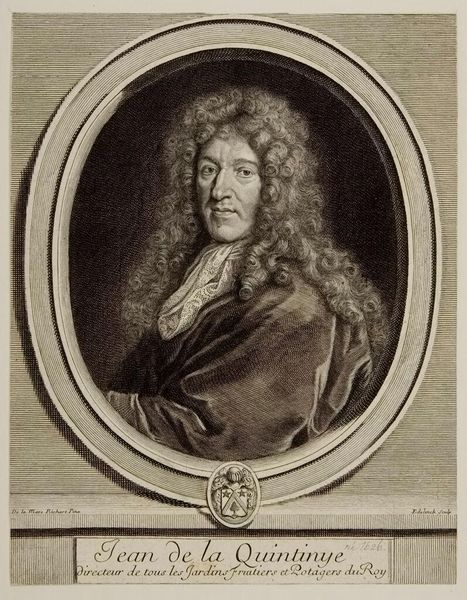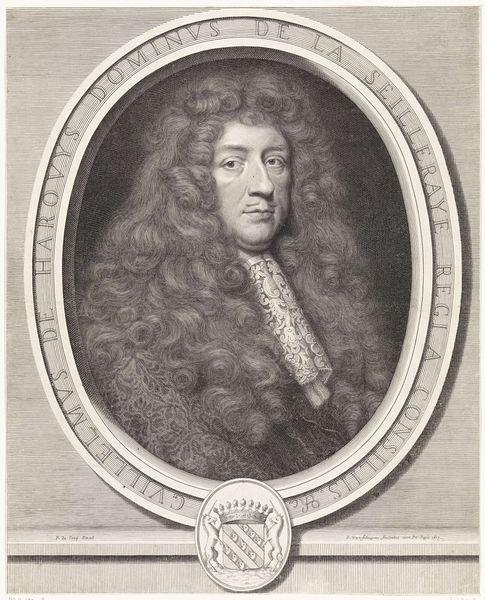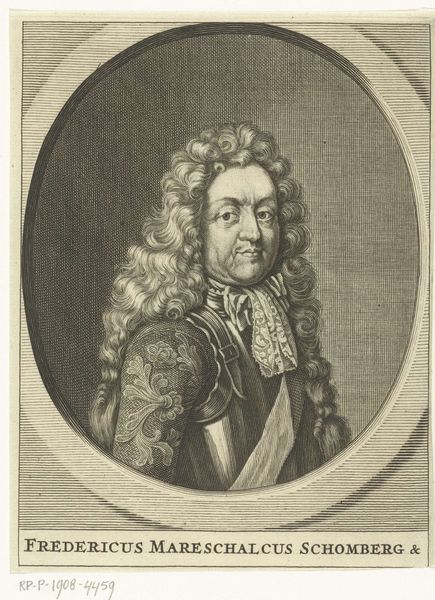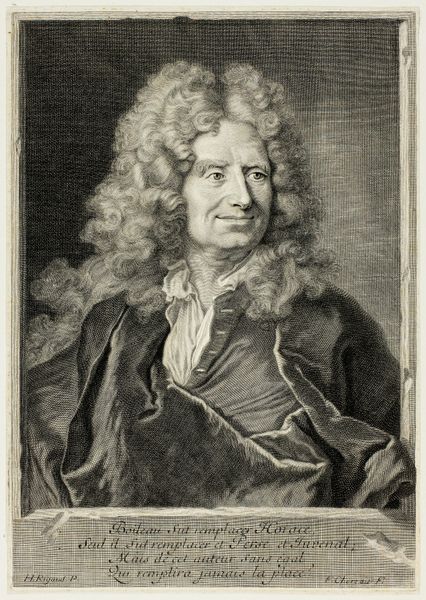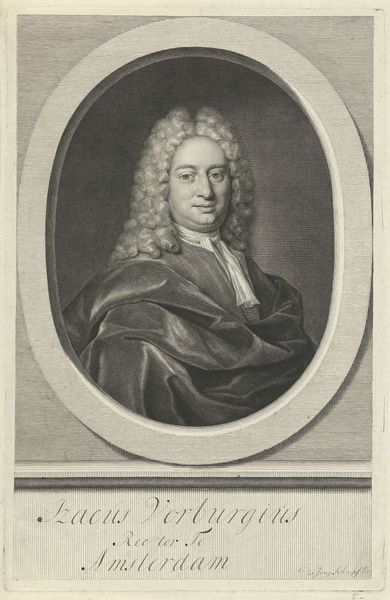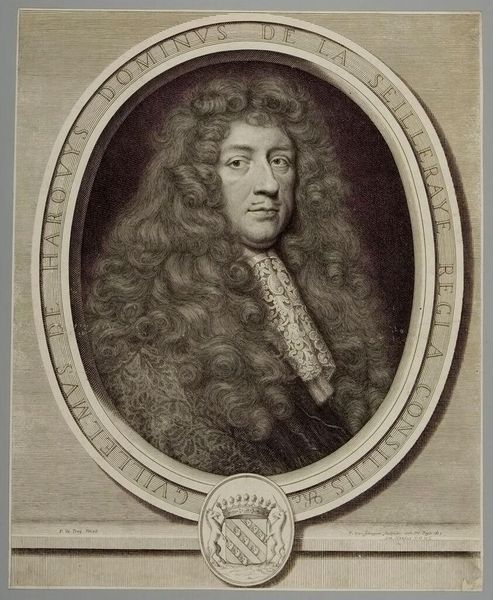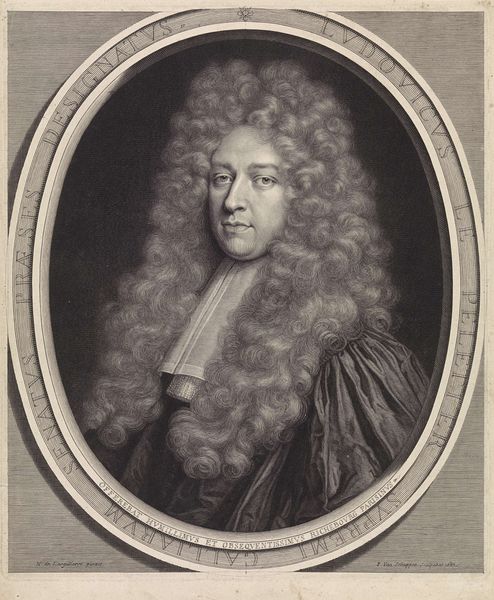
Christopher Wren 17th-18th century
Copyright: CC0 1.0
Curator: This portrait by John Smith captures Christopher Wren, sometime between 1641 and 1690, looking every bit the esteemed architect. What strikes you first about it? Editor: It's the wig, undeniably. Such an overt symbol of status and power. I can't help but immediately consider the social inequalities inherent in such displays of wealth. Curator: It's theatrical, isn't it? Smith really leans into the baroque drama of the era. But consider Wren's own story – his role in rebuilding London after the Great Fire, the symbolism feels…earned. Editor: Perhaps. But those symbols always carry baggage. Who gets remembered? Who gets erased? This portrait, while skillfully executed, is also a monument to a particular social order. Curator: I get it, but it's also quite an intimate portrayal; despite the wig, there's a spark of intellect in those eyes. One can sense the mind behind the architecture. Editor: True. And perhaps that is a start – a recognition of how brilliance always exists within structures of power, influencing and influenced in return. Curator: Exactly. It’s always a balancing act. Editor: Always.
Comments
No comments
Be the first to comment and join the conversation on the ultimate creative platform.
